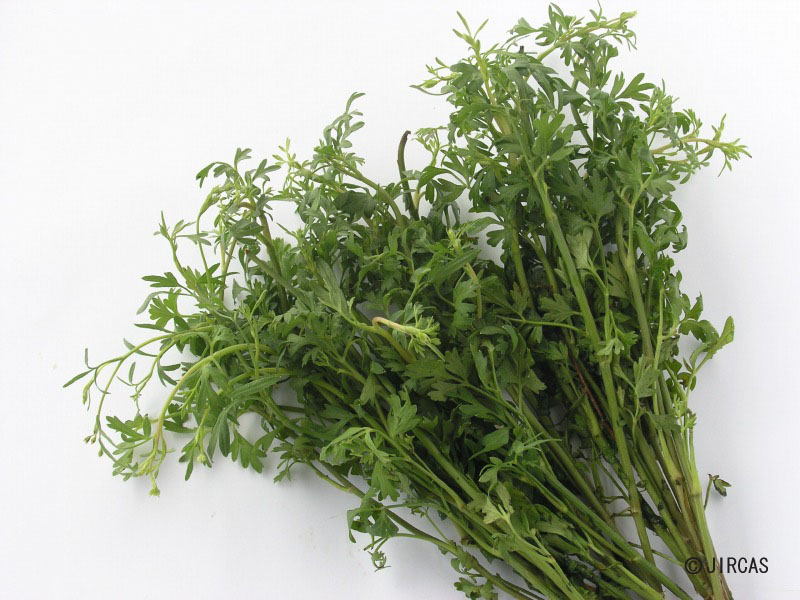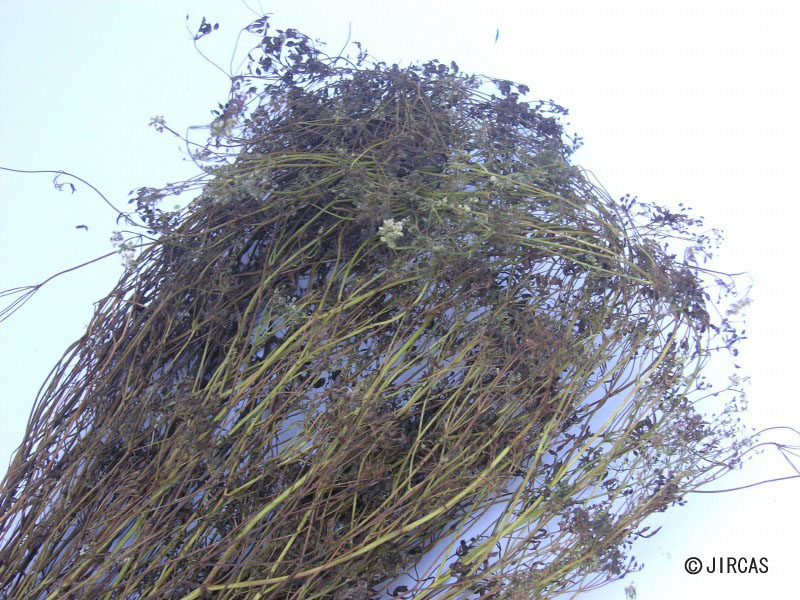Trachyspermum roxburghianum (DC.) H. Wolff (Apiaceae)
- Scientific name
- Trachyspermum roxburghianum (DC.) H. Wolff
- Family name
- Apiaceae
- Local name
- Phakchee rai, phak sangae
Erect annual aromatic herb, up to 90 cm tall. Stem much branched, striate, subglabrous. Leaves alternate, pinnately compound; blade ternately pinnate or 1–2 pinnate, leaflets pinnatifid to pinnatipartite, gradually becoming nearly filiform upward. Inflorescence terminal or axillary, compound umbel; peduncle up to 8 cm long; involucral bracts 2–5, linear-lanceolate; primary rays 2–9, up to 4 cm long; secondary rays (pedicels) 5–15, up to 7 mm long. Calyx teeth 5, small or obscure. Petals 5, obcordate, with broadly inflexed obtuse apices. Pistil with compressed, glandular, hairy ovary. Fruit laterally compressed, ovoid schizocarp, easily splitting into 2 one-seeded mericarps; mericarp with 5 prominent longitudinal ribs.
Propagated at small scales by seed sowing in multiple cropping systems during the rainy season. Young plants are harvested and consumed fresh as a side dish or added to soup.
Dried whole plants including inflorescences are used as a spice to flavour curries.
Dried whole plants including inflorescences are used as a spice to flavour curries.





